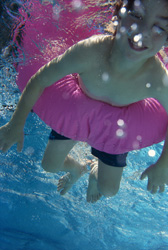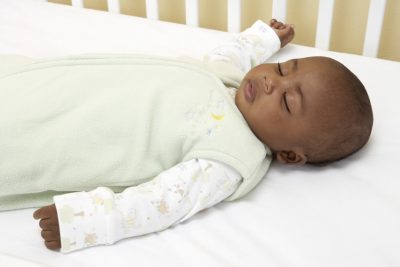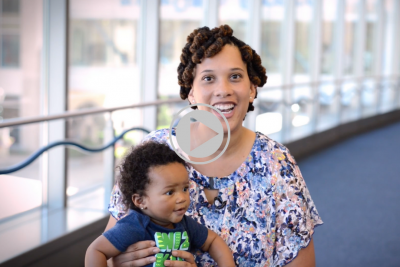How much poop is in your pool water? My pool was closed recently after someone fished out a chunk of poop, and since then babies in swim diapers have been banned from the “big pool,” and ostracized to the baby pool. While I’m glad they’re taking serious steps to keep the pool water safe, I’m not convinced the babies are the ones to blame. Germs in pool water, though, are a big problem and cause many recreational water illnesses: swimmers ear, skin infections, and diarrhea (caused by Cryptosporidium, Giardia, Shigella, norovirus and E. coli O157:H7). So what’s a mom to do? Can you safely swim with your kids in a public pool? You can. Don’t worry. The fun’s not over. But there are some important things every swimmer should know.
 Most pools contain lots of poop. A study published by the CDC found that 70% of public pools contained evidence of E. coli bacteria, which is commonly found in stool. 49% of pools in private clubs were contaminated with E. coli, as were 66% of water parks.
Most pools contain lots of poop. A study published by the CDC found that 70% of public pools contained evidence of E. coli bacteria, which is commonly found in stool. 49% of pools in private clubs were contaminated with E. coli, as were 66% of water parks.
The bacterium that causes “swimmer’s ear,” Pseudomonas aeruginosa, was found in 95 of the 161 filter samples, for a prevalence of 59 percent. This bacterium can also cause a host of other types of infections, especially skin infections. Pseudomonas forms “biofilms” on the walls of pools and can be particularly difficult to control with chlorine. Ultraviolet light or ozone disinfection technology are effective pool water treatments against Pseudomonas.
Girardia was found in two pools, and cryptosporidium was found in one.
Chlorine doesn’t kill most germs right away, and some bacteria can be quite resistant to chlorine, especially Pseudomonas and the diarrhea-causing bacterium Cryptosporidium. A 2010 study found that 1 in 8 public pools had to be closed immediately due to unhealthy conditions, usually inadequate chlorination. The CDC reports a recent 200% increase in pool-based outbreaks of diarrhea caused by cryptosporidium.
Urinating in the pool “uses up” the chlorine, causing the chlorine to bind the urine. The chemical interaction between the urine and the chlorine causes gasses to be released into the air, affecting air quality around indoor pools.
Swim diapers aren’t very effective. Swim diapers can keep formed stool from floating away in the pool, but they don’t do much to prevent bacterial leakage, especially if the baby has diarrhea. Swim diapers do little to prevent urine leakage.
So who’s to blame for all the poop in the pools? I actually don’t think it’s the babies—I think it’s the big kids (and maybe the grown-ups, too). According to the CDC, the average person has 0.14 g of fecal matter (poop) in their peri-anal area. As a pediatrician, I see what kids’ bottoms really look like. Most of them are quite poopy. Wiping your bottom after a bowel movement is an advanced motor skill that most kids don’t master until about age 5 or 6, sometimes later. Bigger kids often have very dirty bottoms, too. Many kids are just too lazy to do a good job wiping their bottoms after a poop, or even just skip wiping. I don’t look at adult bottoms, but I suspect a significant percentage of them are quite dirty, too.
What percentage of swimmers use the rest room and shower with soap, washing their rear end, before entering the pool? I stood at the entrance of our public pool and watched about ten families enter. Only one family shuttled their kids into the restroom and came out showered. In other words, most people entering the pool have plenty of poop on their bottoms.
Babies in diapers, on the other hand, generally have very clean bottoms as long as they don’t have a dirty diaper. Most parents do a good job cleaning baby bottoms during diaper changes. And most babies and toddlers only stool a few times a day. So, unless they poop in their swim diaper, they’re not bringing too much poop into the pool. Babies urinate in their swim diapers, too, but their volume of urine is quite low. It would take a lot of baby pee to make up for one older kid who urinated in the pool once because they were too lazy to go to the restroom.
It’s time we stopped using public pools as toilets. Here’s what you can to do to improve pool water quality:
- Don’t drink the poolwater. Teach your toddlers how to swim without swallowing water. Drinking pool water can cause diarrhea.
- Never swim if you have diarrhea. Ask your kids if they’ve had loose stools before you go to the pool.
- Keep your kids’ bottoms clean (and yours, too). Everyone should use the rest room and then shower with soap just before entering the pool. Use a private shower that allows you to wash your rear end well. Talk to your kids about keeping their bottoms clean. You can really help your kids by providing “flushable wipes” or baby wipes for use after pooping.
- Take bathroom breaks every 60 minutes. Wash hands and take a rinse shower before re-entering the pool.
- Babies should have diapers checked at least every 30 minutes. Change diapers away from poolside (ie: in the restroom) and wash hands well.
Work with your pool operators to take the following actions:
- Post the above “pool rules” on a large sign by the pool.
- Check the free chlorine level and pH before entering the water. The proper free chlorine level for pools is 1–3 mg/L or parts per million [ppm]. The proper pH is 7.2–7.8.
- Add ultraviolet or ozone disinfection technology to pool water treatment.
- Read the CDCs “Triple A’s of Healthy Swimming” website.
My family still goes to our public pool, but I do avoid busy days, and I’ve personally watched them test the pool water. With all my little ones, though, I’m generally stuck at the baby pool. I suspect the baby pool is cleaner than the “big pool” anyway.





Always enjoy these little updates.
Just wanted to comment that it is important to note that the MMWR study used qPCR to detect evidence of bacterial DNA. Although its high sensitivity is one of qPCRs biggest strengths, it should be remembered that the presence of bacterial DNA does not necessarily equal viable organisms. The MMWR study (although they do address it in the editorial note) would have been more useful if they had also done concurrent conventional bacterial cultures to determine viability. However, they do remark that during that time period that they were testing pools in the Atlanta area, there were no documented outbreaks of Recreational Water Illness (RWI).
But a great reminder for us all to be aware that these outbreaks do happen and to be aware!
One last comment, it’s also important for families who have hot-tubs at home to follow these same rules (particularly checking the chlorine and pH levels before using if it’s been a while since the last use). Hot-tub folliculitis (usually due to Pseudomonas) is no fun.
Hi,
Thank you for this.
I can never understand why people don’t encourage their children to use wipes once they are toilet trained. They make a big fuss, as they should, about cleaning a baby & toddler when they’ve had a poo but once they come out of nappies they don’t bother.
Personally, I won’t even dry my bits on the same towel that I use on my body. I mainly use kitchen roll or towels for this.